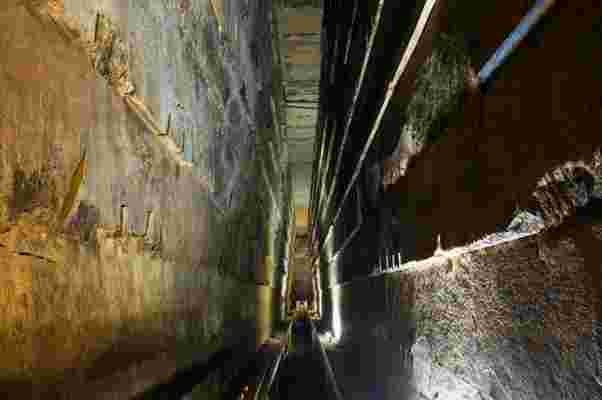Located in Giza, Egypt, the Great Pyramid of Giza is the oldest of the Seven Wonders of the Ancient World. Completed around 2560 B.C., it was once safe to assume that no major secrets would reveal themselves after centuries of scientists and researchers studying the 455-foot-tall structure. Yet, after an article on Thursday in Nature was published revealing a previously unknown chamber, all assumptions have been thrown out the window.
The walls of the Great Pyramid of Giza were first breached in the Middle Ages. It was at that time that most of the inner workings of the great pyramid were first discovered. Nevertheless, there remained a good amount of information still unknown about the largest pyramid in Giza. Which is one of the main reasons why, for centuries, scientists and researchers have dedicated their careers to studying the vast structure.
Archaeologists have long understood that there are three major areas within the space: the King’s chamber, the Queen’s chamber, and the Grand Gallery. Yet, according to the article published in Nature , this new void was discovered by scanning through the rocks with subatomic particles. While researchers are unsure of the exact size of the newly discovered space, or whether it's parallel to the ground or at an angle, they have concluded that it is comparable to the size of the Grand Gallery (which has a length of 154 feet and a height of 28 feet). What's more, the teams involved in the project believe the void is around 68 feet above the ground level. What the newly discovered chamber was once used for remains a mystery, and one that may take years, if not decades to solve. “There are still many architectural hypotheses to consider,” the authors wrote in Nature .

A photograph inside of the Grand Gallery, a space within the Great Pyramid of Giza.
The Great Pyramid of Giza was originally built as a testament to architectural aptitude of Pharaoh Khufu. If nothing else, this latest discovery proves that the architects who originally designed the structure were true geniuses, as they are still causing scientists and architects alike to scratch their collective heads, some 4,500 years later.

Leave a Reply